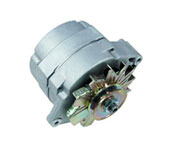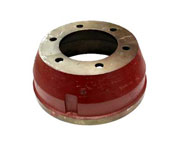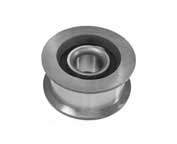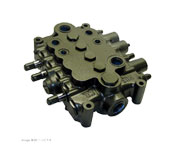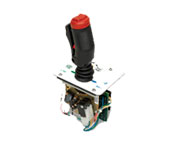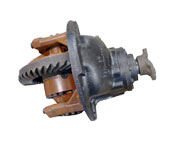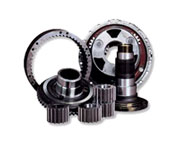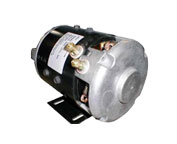Carriages and Carriage Parts
There are actually 4 sizes of hook type fork carriages rated by the blade carriage hoisting capability. Hook type tine carriages have been the same.
Class I carriages are rated for cargo up to 2000 lbs. The carriage bar spacing for Class I is 13 inches. Class II carriages are rated for loads as much as 5,550 lbs. Their carriage bar spacing is 16 inches. Class III carriages are rated for loads up to 10,000 lbs. The carriage bar spacing for this class is 20 inches. Class IV carriages are rated for cargo as much as 15,500 lbs. The carriage bar spacing utilized for this capacity is 25 inches.
Pin mounted tines differ by the amount of offset between the fork and the blade eye. Different manufacturers will differ the carriages for pin type forks. Carriage capacity would be determined by the carriage pin size and by the fork size.
 Click to Download the pdf
Click to Download the pdf
Forklift Parts
Alternators
An alternator is a machine which converts mechanical energy into electric energy. It does this in the form of an electrical current. In essence, an AC electrical generator can be labeled an alternator. The word usually refers to a rotating, small device driven by automotive and various internal combustion engines. Alternators which are placed in power stations and are driven...
More
Brakes
A brake drum is wherein the friction is provided by the brake shoes or brake pads. The shoes or pads press up against the rotating brake drum. There are a few various brake drums kinds along with certain specific differences. A "break drum" will usually refer to when either pads or shoes press onto the interior surface of the drum....
More
Carriage Rollers
Carriage rollers are specially designed bearings that are utilized on lift masts to be able to help them perform within tough environmental conditions. Lift masts are normally subjected to shocks, oscillations, high dynamic and vibrations and static loads. This equipment is often exposed to environmental influences like for example cold, heat, dust, moisture, contamination and aggressive ambient air. Therefore, the...
More
Control Valves
Automatic control systems were primarily developed more than two thousand years ago. The ancient water clock of Ktesibios in Alexandria Egypt dating to the 3rd century B.C. is considered to be the first feedback control device on record. This clock kept time by means of regulating the water level inside a vessel and the water flow from the vessel. A...
More
Controllers
Lift trucks are accessible in different load capacities and various units. The majority of forklifts in a regular warehouse surroundings have load capacities between one to five tons. Larger scale models are utilized for heavier loads, such as loading shipping containers, could have up to fifty tons lift capacity.
The operator can utilize a control to raise and lower the...
More
Differentials
A mechanical device which can transmit torque and rotation via three shafts is known as a differential. Every now and then but not at all times the differential will utilize gears and would function in two ways: in automobiles, it provides two outputs and receives one input. The other way a differential operates is to put together two inputs to...
More
Drive Axles
The piece of equipment that is elastically fastened to the framework of the vehicle utilizing a lift mast is called the forklift drive axle. The lift mast attaches to the drive axle and can be inclined, by at least one tilting cylinder, round the axial centerline of the drive axle. Frontward bearing components combined with rear bearing parts of a...
More
Drive Motors
Motor Control Centers or likewise called MCC's, are an assembly of one enclosed section or more, that have a common power bus principally consisting of motor control units. They have been utilized since the 1950's by the vehicle business, in view of the fact that they utilized a lot of electric motors. Today, they are utilized in other industrial and...
More


![]() Click to Download the pdf
Click to Download the pdf
